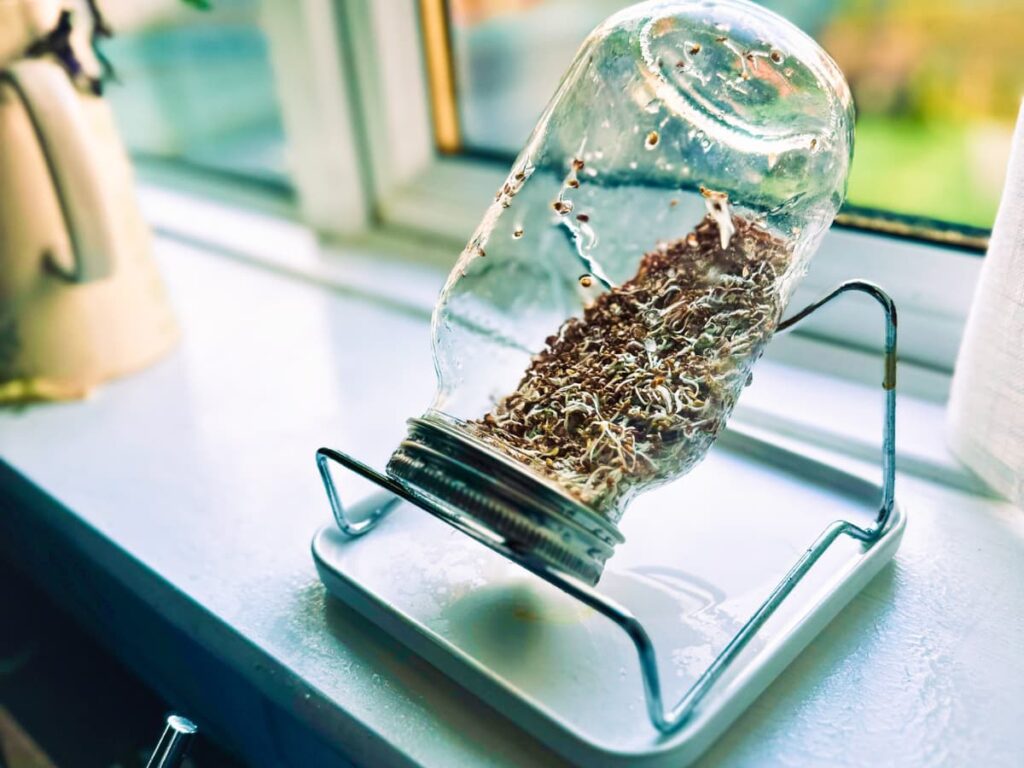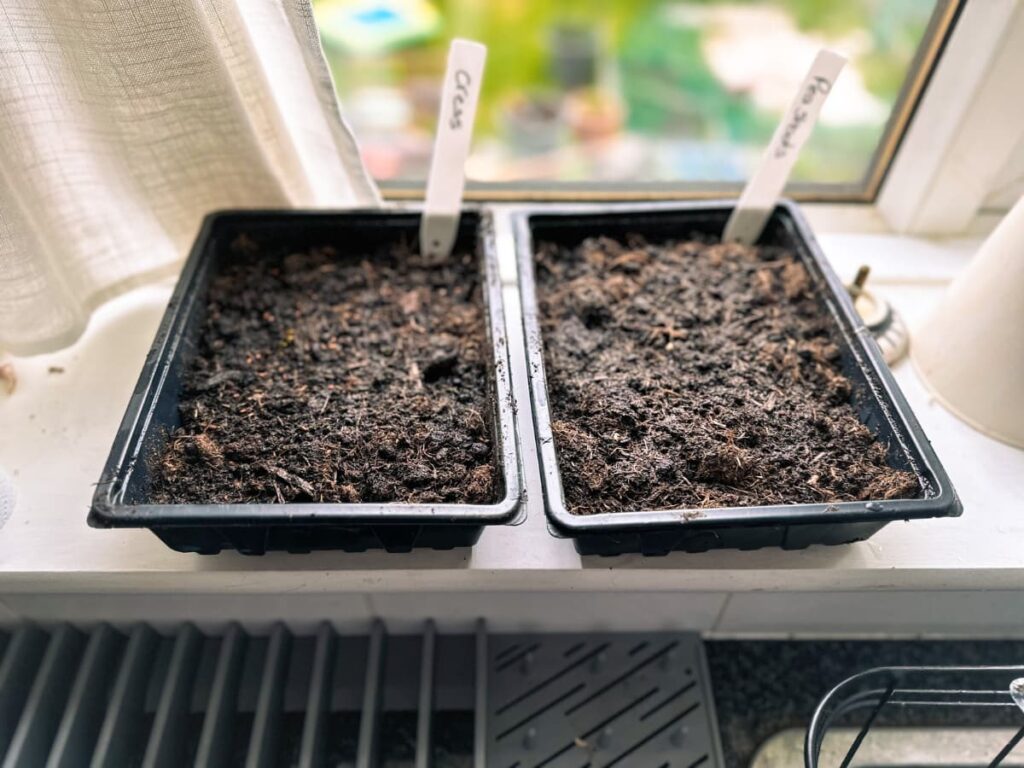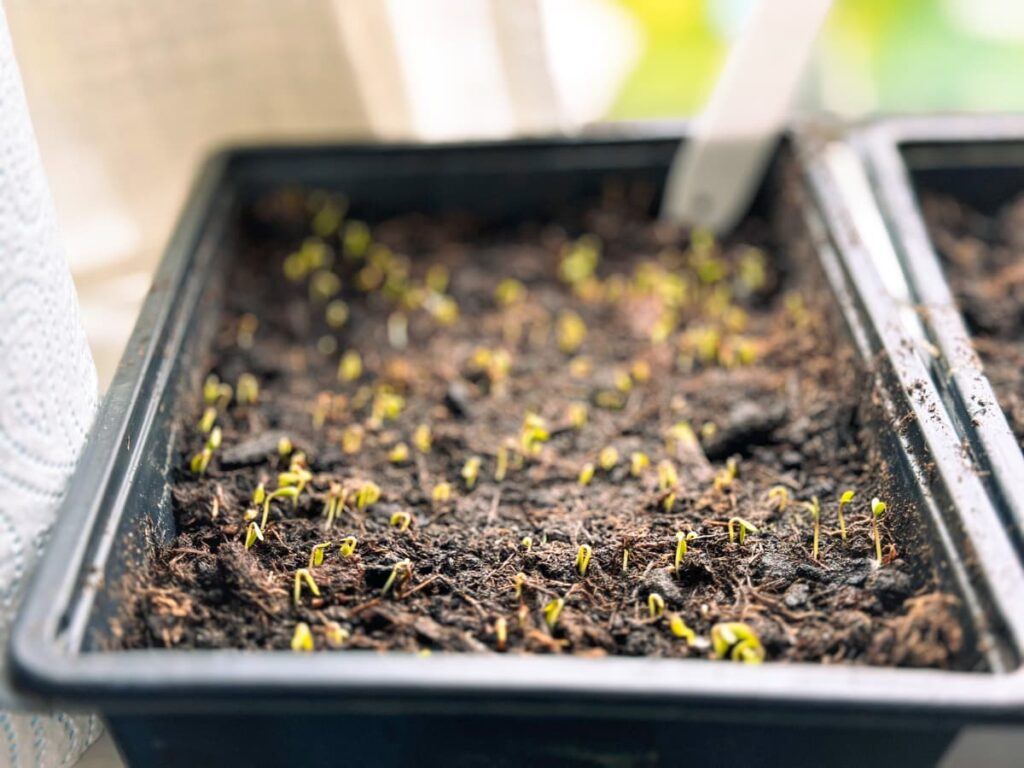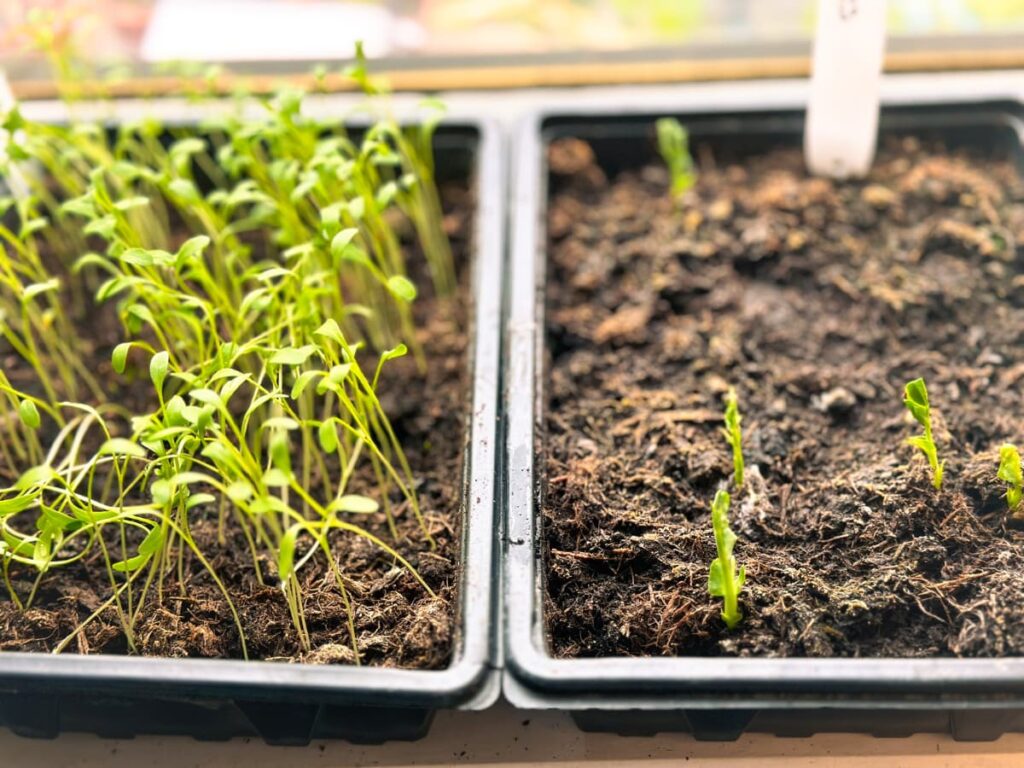Micro greens are the baby shoots and sprouts of a variety of vegetable seeds. They are one of the most nutritious foods you can eat, and they are simple to grow on a windowsill in your kitchen! Lets take a look at what are microgreens and why should I eat them?
Please note that this page contains affiliate links. While we only recommend products that we believe in, we may benefit financially from any purchases you make.

It’s early summer, the garden is in full swing and we are starting to harvest lots of delicious produce! We don’t really want to think about those long winter months…
But imagine with me, if you will, the short days. The cold evenings drawing right in. The fresh produce form the bountiful garden is a distant memory…
Here comes the vegetable version of a ‘knight in shining armour’ – Microgreens!!
Fresh green shoots and sprouts (not brussels, bean) top your stews, soups and sandwiches and it reminds you of the beautiful fresh lettuce to come in the summer. (and it’s sooooo good for you)
Sold yet?
What are Microgreens?
Microgreens and sprouts are exactly what they sound like, a tiny early version of the veggie. Usually used just after sprouting or growing green leaves.
A vegetable seed contains within it all the information, energy and detail that it needs to produce the adult version of the plant. When the seed germinates, it uses a lot of that energy and nutrition to create the first roots and leaves in a big burst. Using them at this early stage harnesses all of that nutrition at it’s best.
A great example we would all know is cress. I’m sure we all remember growing cress at school on a sheet of kitchen roll and putting it in a sandwich. Well, this is the same idea, just with lots of different seeds.
Who can grow microgreens?
ANYONE!!! You don’t need a garden at all, you can put them in a jar or a seed tray of compost on your windowsill. All most seeds need to germinate are moisture and warmth (and sometimes light).
Lettuce is a great example of a microgreen to grow that you don’t need a ton of room for. No planters in a sunny spot, or raised beds to grow these tiny nutritional powerhouses.
The difference between Microgreens and Sprouts
Although microgreens and sprouts are used in very similar ways, there are slight differences between them. A sprout is usually used before the leaves grow beyond the first leaves. They have a shorter cycle of growth, around 2-7 days. Common sprouts you are probably familiar with are bean sprouts in stir fry mix.

Microgreens usually grow for around 7-14 days before harvesting, and are used for the new true leaves that emerge. The stems and leaves are edible and used freshly cut.
So why should I eat them?
Because they are harvested at such an early time in their development, they are packed full of nutrients and antioxidants. This means that they are often more nutrient dense than the adult version of the vegetable!
Take, for example, broccoli greens. They are rich in calcium, magnesium, phosphorous, sodium, potassium, and microelements, including copper, iron, manganese, and zinc – Source
Microgreens have been shown to lose the nutritional benefits quickly after harvesting however, so this is a great reason to grow your own. The freshest most nutritional greens are used straight away from your windowsill. Perfect! – Source
It’s great to know all of the things they contain, but what do they actually do?
Microgreens have the ability to:
- Lower bad cholesterol
- Reduce the risk of heart disease
- Protect against diabetes
- Protect against certain types of cancer
The antioxidants in the sprouted seed have become more concentrated and more bioavailable through the germination process so it’s not a surprise that they could protect against some of these diseases.
( It’s important to note that studies are limited at this point, and further investigation is needed to show conclusive effects on humans)
How to grow Microgreens
It’s really simple. A container, some soil, some seeds, water and a windowsill.
Start by putting some compost into a seed tray or shallow container.

Place or scatter the seeds onto the soil and cover lightly with a little more compost. (some seeds require light to germinate, so no need to cover, but do read the packet for yourself)
Water lightly to moisten but don’t let it get soggy.

Label, and place on a sunny windowsill (PLEEAASE don’t skip the labelling.. I promise you will not remember later. We all think we will, and we all forget. Just label it. I promise it’s worth it.)
Keep an eye on them and in a few days you should see tiny shoots!
This is my cress after 2 days

And my cress and peas after 5 days

The cress is ready to use, but the pea shoots probably need a couple more days.
If you’d like to grow your own, these are a great starter kit, containing lots of different types of seed.
So what do you do with them?
Fresh microgreens are great as an addition to sandwiches, not just egg and cress! You could:
- Put some on a pastrami sandwich with pickle, for a fresh hit.
- Top scrambled eggs with avocado and microgreens
- Lift Avo on toast by sprinkling with alfalfa sprouts and sesame seeds
- Add as a garnish on top of soup with cream or yoghurt
- Add to smoothies or juices
- Garnish your favourite pizza with fresh microgreens for a lovely contrast
This little but mighty tray of fresh leaves is a cheap, easy and really handy way to add a big nutritional hit to your diet for not much effort. And if you or your family don’t like one, pick it off and try another. There’s really not much to lose!
Tell me your favourite seed to sprout and grow in the comments below. Share if you liked this page! Thanks friends x
Other helpful articles:
What to plant in June – Our Urban Homestead Life


1 thought on “What are Microgreens and why should I eat them?”